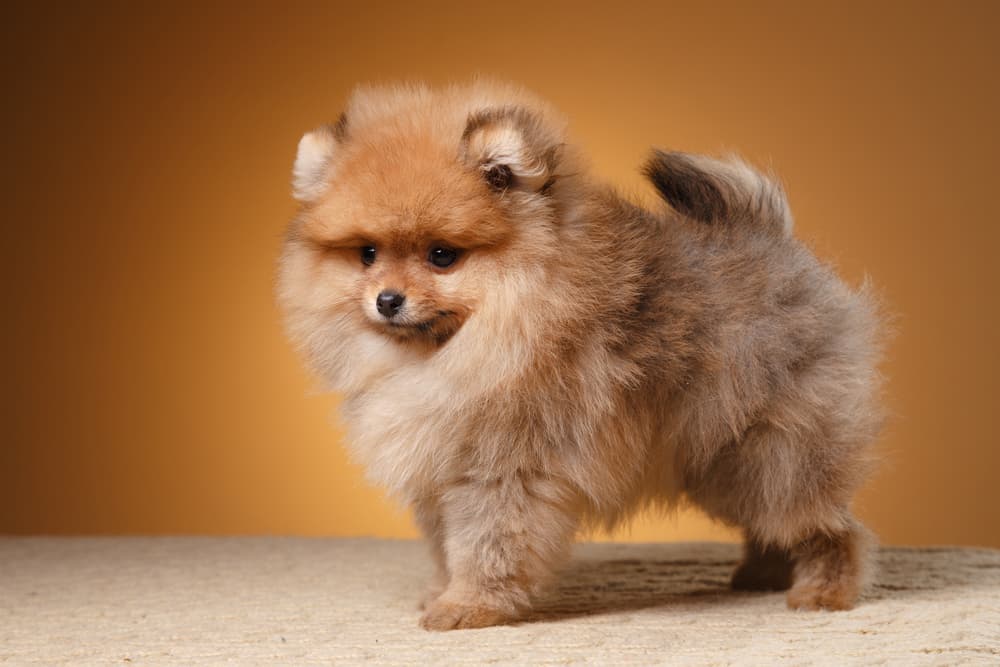Poms have a luxuriant, fluffy double coat that comes in a beautiful array of colors, from rich red to black and white. You might come across a white Pom with colored markings or a black Pom with tan markings, but part-colored Pomeranians tend to be rare. Don’t let the beautiful coat scare you away.
Pomeranians are not difficult to groom, requiring only one or two brushing sessions a week. Additionally, Pomeranians have fluffy tails that curl up and over the back, a foxy face with alert, wedge-shaped ears, and a thick mane around their neck that can handle the snowy plains of the breed’s native Northern Germany. And you’ll be hard-pressed to find a Pomeranian whose almond-shaped eyes don’t sparkle with intelligence and curiosity.
Of course, all dogs are unique in personality and temperament, but you’ll find most Poms to be quite bossy. They’re perky, friendly little dogs that aren’t afraid to verbally intimidate much bigger breeds. Luckily, they get along quite well with other dog breeds when they’re adequately socialized at a young age.
Cute, feisty, and furry, Pomeranians typically make great family dogs as they’re intelligent, loyal, and tend to get along with children. Make sure to show children the appropriate way to play with a smaller dog with a Pomeranian to avoid any mishaps or injuries.
Poms make great alert and alarm dogs, though they may be prone to excessive barking. In fact, they sometimes don’t know when to stop barking, so you may want to invest in behavioral training. On that note, Poms make great companions for the elderly because of their alertness as well as their delightful personalities.





















